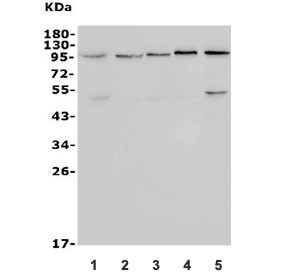Cookie preferences
This website uses cookies, which are necessary for the technical operation of the website and are always set. Other cookies, which increase the comfort when using this website, are used for direct advertising or to facilitate interaction with other websites and social networks, are only set with your consent.
Configuration
Technically required
These cookies are necessary for the basic functions of the shop.
"Allow all cookies" cookie
"Decline all cookies" cookie
CSRF token
Cookie preferences
Currency change
Customer-specific caching
FACT-Finder tracking
Individual prices
Selected shop
Session
Comfort functions
These cookies are used to make the shopping experience even more appealing, for example for the recognition of the visitor.
Note
Show the facebook fanpage in the right blod sidebar
Statistics & Tracking
Affiliate program
Conversion and usertracking via Google Tag Manager
Track device being used

| Item number | Size | Datasheet | Manual | SDS | Delivery time | Quantity | Price |
|---|---|---|---|---|---|---|---|
| NSJ-RQ5775 | 100 µg | - | - |
3 - 10 business days* |
772.00€
|
If you have any questions, please use our Contact Form.
You can also order by e-mail: info@biomol.com
Larger quantity required? Request bulk
You can also order by e-mail: info@biomol.com
Larger quantity required? Request bulk
0.5mg/ml if reconstituted with 0.2ml sterile DI water. TRPV4 (Transient Receptor Potential Cation... more
Product information "Anti-TRPV4 / Transient receptor potential cation channel subfamily V member 4"
0.5mg/ml if reconstituted with 0.2ml sterile DI water. TRPV4 (Transient Receptor Potential Cation Channel Subfamily V Member 4), also known as TRP12, OTRPC4 or VROAC, is a protein that in humans is encoded by the TRPV4 gene. This gene encodes TRPV4, a member of the OSM9-like transient receptor potential channel (OTRPC) subfamily in the transient receptor potential (TRP) superfamily of ion channels. By genomic sequence analysis, Liedtke et al.(2000) mapped the TRPV4 gene to chromosome 12q24.1. They mapped the mouse Trpv4 gene to distal chromosome 5 by radiation hybrid analysis. Wissenbach et al.(2000) found that hypoosmotic conditions rapidly activated TRP12, while hyperosmotic conditions inhibited the activity. Strotmann et al.(2000) showed that OTRPC4 was responsive to changes in extracellular osmolarity in the physiologically relevant range and was expressed in tissues exposed to changing osmotic environments. Protein function: Non-selective calcium permeant cation channel involved in osmotic sensitivity and mechanosensitivity. Activation by exposure to hypotonicity within the physiological range exhibits an outward rectification (PubMed:18826956, PubMed:18695040, PubMed:29899501). Also activated by heat, low pH, citrate and phorbol esters (PubMed:16293632, PubMed:18826956, PubMed:18695040, PubMed:25256292, PubMed:20037586, PubMed:21964574). Increase of intracellular Ca(2+) potentiates currents. Channel activity seems to be regulated by a calmodulin- dependent mechanism with a negative feedback mechanism (PubMed:12724311, PubMed:18826956). Promotes cell-cell junction formation in skin keratinocytes and plays an important role in the formation and/or maintenance of functional intercellular barriers. Acts as a regulator of intracellular Ca(2+) in synoviocytes (PubMed:19759329). Plays an obligatory role as a molecular component in the nonselective cation channel activation induced by 4- alpha-phorbol 12,13-didecanoate and hypotonic stimulation in synoviocytes and also regulates production of IL-8 (PubMed:19759329). Together with PKD2, forms mechano- and thermosensitive channels in cilium (PubMed:18695040). Negatively regulates expression of PPARGC1A, UCP1, oxidative metabolism and respiration in adipocytes. Regulates expression of chemokines and cytokines related to proinflammatory pathway in adipocytes. Together with AQP5, controls regulatory volume decrease in salivary epithelial cells. Required for normal development and maintenance of bone and cartilage (PubMed:26249260). In its inactive state, may sequester DDX3X at the plasma membrane. When activated, the interaction between both proteins is affected and DDX3X relocalizes to the nucleus (PubMed:29899501). [The UniProt Consortium]
| Keywords: | Anti-VRL2, Anti-TRPV4, Anti-TrpV4, Anti-TRP12, Anti-VRL-2, Anti-OTRPC4, Anti-VR-OAC, Anti-Osm-9-like TRP channel 4, Anti-Vanilloid receptor-like protein 2, Anti-Vanilloid receptor-like channel 2, Anti-Transient receptor potential protein 12, TRPV4 Antibod |
| Supplier: | NSJ Bioreagents |
| Supplier-Nr: | RQ5775 |
Properties
| Application: | WB, Direct ELISA |
| Antibody Type: | Polyclonal |
| Conjugate: | No |
| Host: | Rabbit |
| Species reactivity: | human, mouse, rat |
| Immunogen: | Recombinant human protein (amino acids N66-L871) |
| Format: | Purified |
Database Information
| KEGG ID : | K04973 | Matching products |
| UniProt ID : | Q9HBA0 | Matching products |
| Gene ID : | GeneID 59341 | Matching products |
Handling & Safety
| Storage: | +4°C |
| Shipping: | +4°C (International: +4°C) |
Caution
Our products are for laboratory research use only: Not for administration to humans!
Our products are for laboratory research use only: Not for administration to humans!
Information about the product reference will follow.
more
You will get a certificate here
Viewed

